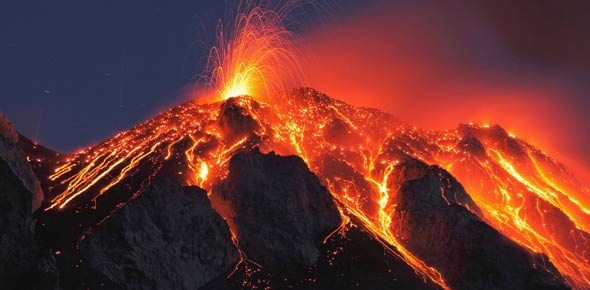Pre-test Chapter 15

This is a pre-assessment for Chapter 15. It will not count as a grade, but will allow you and your teachers to know how much you already know or what you don't know about earthquakes and volcanoes.
- 1.
The point where an earthquake occurs is the
- A.
Epicenter
- B.
Focus
- C.
Hot spot
- D.
Fault
Correct Answer
B. Focus -
- 2.
Earthquakes waves are called
- A.
Sound waves
- B.
Composite waves
- C.
Seismic waves
- D.
Earthquake waves
Correct Answer
C. Seismic waves -
- 3.
Earthquakes are measured by
- A.
Magnitude and intensity.
- B.
Intensity and time elapse.
- C.
Magnitude and time elapse
- D.
Seismic waves
Correct Answer
A. Magnitude and intensity. -
- 4.
Intensity of an earthquake relates to
- A.
How long an earthquake lasts.
- B.
The amount of energy released.
- C.
How bad people thought it was.
- D.
The amount of damage produced.
Correct Answer
D. The amount of damage produced. -
- 5.
Seismic waves are recorded by a
- A.
Seismograph.
- B.
Large x-rays.
- C.
Earthquake detector.
Correct Answer
A. Seismograph. -
- 6.
A tsunami is a gigantic
- A.
Earthquake.
- B.
Volcano.
- C.
Sea wave.
Correct Answer
C. Sea wave. -
- 7.
A relatively small volcano formed by moderate to explosive eruptions of tephra is called a
- A.
Cinder cone volcano.
- B.
Hot volcano.
- C.
Small volcano.
- D.
Tephra volcano.
Correct Answer
A. Cinder cone volcano. -
- 8.
___________ describes the ability of structures to stand up against the vibrations caused by an earthquake.
- A.
Sturdiness
- B.
Seismic safe
- C.
Solid foundation
Correct Answer
B. Seismic safe -
- 9.
_______________ is the measure of energy released by an earthquake.
- A.
Force
- B.
Destruction
- C.
Magnitude
Correct Answer
C. Magnitude -
- 10.
______________________ is a steep-sided volcano formed from alternating layers of violent eruptions of tephra and quieter eruptions of lava.
- A.
Composite volcano
- B.
Cinder cone volcano
- C.
Hot volcano
- D.
Lava volcano
Correct Answer
A. Composite volcano -
- 11.
Normal, reverse and strike-slip are all names for different
- A.
Earthquakes.
- B.
Faults.
- C.
Waves.
Correct Answer
B. Faults. -
- 12.
A shield volcano is a large, broad volcano with ___________ sides formed by the buildup of basaltic layers.
- A.
Steep
- B.
Flat
- C.
Gently sloping
Correct Answer
C. Gently sloping -
- 13.
A rift is a
- A.
Long crack.
- B.
Part of a mountain.
- C.
Large pile of rocks.
Correct Answer
A. Long crack. -
- 14.
A normal fault occurs when
- A.
Rocks are pulled apart.
- B.
Rocks are compressed.
- C.
Rocks are sheared.
Correct Answer
A. Rocks are pulled apart. -
Quiz Review Timeline +
Our quizzes are rigorously reviewed, monitored and continuously updated by our expert board to maintain accuracy, relevance, and timeliness.
-
Current Version
-
Dec 26, 2012Quiz Edited by
ProProfs Editorial Team -
Mar 01, 2009Quiz Created by
Bmcnicholas
 Back to top
Back to top


